标签:软件设计 input rest 目录 相关 local str1 compiler handle
SSM:Mybatis + Spring + SpringMVC
Model(模型):数据模型,提供要展示的数据,因此包含数据和行为,可以认为是领域模型或JavaBean组件(包含数据和行为),不过现在一般都分离开来:Value Object(数据Dao)和服务层(行为Service)。也就是模型提供了模型数据查询和模型数据的状态更新等功能,包括数据和业务。
View(视图):负责进行模型的展示,一般就是我们见到的用户界面,客户想看到的东西。
Colltroller(控制器):接收用户请求,委托给模型进行处理(状态改变),处理完毕后把返回代数据模型数据返回给视图,由视图负责展示。也就是说是控制器做了个调度员的工作
表现层,业务层,持久层
一般指web层。负责接收客户端请求,向客户端相应结果
表现层包括展示层和控制层!(控制层负责接收请求,展示层负责结果的展示)
表现层依赖于业务层,接收到客户端请求一般会调用业务层进行业务处理,并将结果返回给客户端。
表现层的设计一般使用MVC模型。(MVC是表现层的设计模型,和其他层没有关系)
一般指service层,负责业务逻辑处理
表现层依赖业务层,但是业务层不依赖表现层
业务层在业务处理时,可能会依赖持久层,如果要对数据持久化需要保证事务一致性。
一般指dao层,负责数据持久化
持久层包括数据库和数据访问层(数据库是载体,数据访问层是业务层和持久层交互的接口)
业务层通过数据访问层将数据持久化到数据库中。
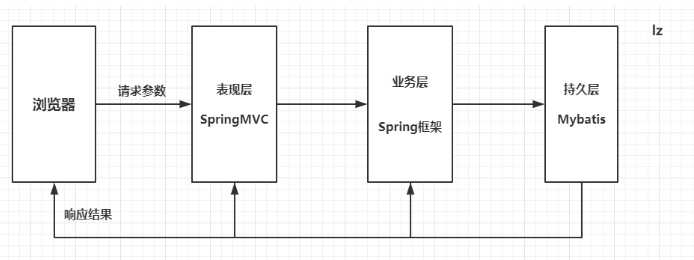
比较典型的MVC模式:JSP+Servlet+JavaBean
MVC:模型(dao,service)视图(jsp)控制器(Servlet)
职责分析
controller:控制器
Model:模型
View:视图
MVC框架做的事情
SpringMVC是Spring Framework的一部分,是基于Java实现的MVC的轻量级Web框架
特点:
Spring的web框架围绕DispatcherServlet[调度Servlet]设计。
DispatcherServlet的作用是将请求分发到不同的处理器。
SpringMVC框架以请求为驱动,围绕一个中心Servlet分派请求及提供其他功能,DispatcherServlet是一个实际的Servlet(他继承自HttpServlet基类)
发起请求时,被前置的控制器拦截到请求,根据请求参数生成代理请求,找到请求对应的实际控制器,控制器处理请求,创建数据模型,访问数据库,将模型响应给中心处理器,控制器使用模型与视图渲染图结果,将结果返回给中心控制器,再将结果返回给请求者。
搭建环境
<properties>
<project.build.sourceEncoding>UTF-8</project.build.sourceEncoding>
<maven.compiler.source>1.8</maven.compiler.source>
<maven.compiler.target>1.8</maven.compiler.target>
<spring.version>5.0.2.RELEASE</spring.version>
</properties>
<dependencies>
<dependency>
<groupId>org.springframework</groupId>
<artifactId>spring-context</artifactId>
<version>${spring.version}</version>
</dependency>
<dependency>
<groupId>org.springframework</groupId>
<artifactId>spring-web</artifactId>
<version>${spring.version}</version>
</dependency>
<dependency>
<groupId>org.springframework</groupId>
<artifactId>spring-webmvc</artifactId>
<version>${spring.version}</version>
</dependency>
<dependency>
<groupId>javax.servlet</groupId>
<artifactId>servlet-api</artifactId>
<version>2.5</version>
<scope>provided</scope>
</dependency>
<dependency>
<groupId>javax.servlet.jsp</groupId>
<artifactId>jsp-api</artifactId>
<version>2.0</version>
<scope>provided</scope>
</dependency>
</dependencies><servlet>
<servlet-name>dispatcherServlet</servlet-name>
<servlet-class>org.springframework.web.servlet.DispatcherServlet</servlet-class>
<!-- 加载Spring的配置文件-->
<init-param>
<param-name>contextConfigLocation</param-name>
<param-value>classpath:springmvc.xml</param-value>
</init-param>
<!-- -->
<load-on-startup>1</load-on-startup>
</servlet>
<servlet-mapping>
<servlet-name>dispatcherServlet</servlet-name>
<!-- 发送任何请求都会经过Servlet-->
<url-pattern>/</url-pattern>
</servlet-mapping>
<!-- springMVC自带过滤器-->
<filter>
<filter-name>encoding</filter-name>
<filter-class>org.springframework.web.filter.CharacterEncodingFilter</filter-class>
<init-param>
<param-name>encoding</param-name>
<param-value>utf-8</param-value>
</init-param>
</filter>
<filter-mapping>
<filter-name>encoding</filter-name>
<url-pattern>/*</url-pattern>
</filter-mapping><?xml version="1.0" encoding="UTF-8"?>
<beans xmlns="http://www.springframework.org/schema/beans"
xmlns:mvc="http://www.springframework.org/schema/mvc"
xmlns:context="http://www.springframework.org/schema/context"
xmlns:xsi="http://www.w3.org/2001/XMLSchema-instance"
xsi:schemaLocation="
http://www.springframework.org/schema/beans
http://www.springframework.org/schema/beans/spring-beans.xsd
http://www.springframework.org/schema/mvc
http://www.springframework.org/schema/mvc/spring-mvc.xsd
http://www.springframework.org/schema/context
http://www.springframework.org/schema/context/spring-context.xsd">
</beans> <!-- 开启注解扫描-->
<context:component-scan base-package="cn.imut"/> <!-- 视图解析器-->
<bean id="internalResourceViewResolver" class="org.springframework.web.servlet.view.InternalResourceViewResolver">
<!-- 文件所在目录-->
<property name="prefix" value="/WEB-INF/jsp/"/>
<!-- 文件的后缀名-->
<property name="suffix" value=".jsp"/>
</bean> <!-- 开启SpringMVC注解支持-->
<mvc:annotation-driven/>
<bean class="org.springframework.web.servlet.handler.BeanNameUrlHandlerMapping"/>
<bean class="org.springframework.web.servlet.mvc.SimpleControllerHandlerAdapter"/>编写程序
//控制器
@Controller
public class HelloController {
@RequestMapping(path = "/hello")
public String sayHello() {
System.out.println("Hello StringMVC!");
return null;
}
}SpringMVC框架基于组件方式执行流程
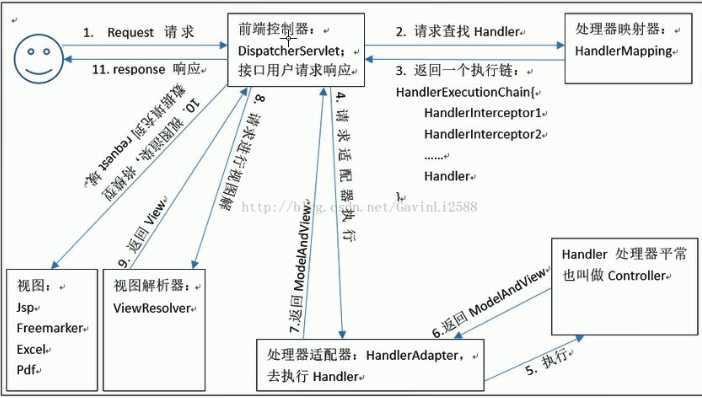
//定义控制器
//注意点:不要导错包,实现Controller接口,重写方法;
public class ControllerTest1 implements Controller {
public ModelAndView handleRequest(HttpServletRequest httpServletRequest, HttpServletResponse httpServletResponse) throws Exception {
//返回一个模型视图对象
ModelAndView mv = new ModelAndView();
mv.addObject("msg","Test1Controller");
mv.setViewName("test");
return mv;
}
}<bean name="/t1" class="com.kuang.controller.ControllerTest1"/><!-- 自动扫描指定的包,下面所有注解类交给IOC容器管理 -->
<context:component-scan base-package="com.kuang.controller"/>//@Controller注解的类会自动添加到Spring上下文中
@Controller
public class ControllerTest2{
//映射访问路径
@RequestMapping("/t2")
public String index(Model model){
//Spring MVC会自动实例化一个Model对象用于向视图中传值
model.addAttribute("msg", "ControllerTest2");
//返回视图位置
return "test";
}
}概念
Restful就是一个资源定位及资源操作的风格。不是标准也不是协议,只是一种风格。基于这个风格设计的软件更简洁,更有层次,更易于实现缓存等机制。
功能
传统方式操作资源:通过不同的参数来实现不同的效果!方法单一,post和get
使用RESTful操作资源:可以通过不同的请求方式来实现不同的效果!如下:请求地址一样,但功能可以不同

@Controller
public class ModelTest {
@RequestMapping(path = "/m1/t1")
public String test(Model model) {
model.addAttribute("msg","ModelTest");
return "forward:/WEB-INF/jsp/test.jsp";
}
}@Controller
public class ModelTest {
@RequestMapping(path = "/m1/t1")
public String test(Model model) {
model.addAttribute("msg","ModelTest");
return "redirect:/index.jsp";
}
}提交的域名称和处理方法的参数名一致
提交的域名称和处理方法的参数名不一致
@GetMapping("/t1")
public String test1(@RequestParam("name1") String name, Model model) {
//1.接收前端参数
System.out.println("接收到前端的参数为:" + name);
//2.将返回代结果传递给前端
model.addAttribute("msg",name);
//3.跳转视图
return "test";
}提交的是一个对象
@GetMapping("/t2")
public String test2(User user) {
System.out.println(user);
return "test";
}http://localhost:8080/springmvc_03_servlet_war_exploded/user/t2?id=1&name=q&age=1Model、ModelMap、ModeAndView的区别
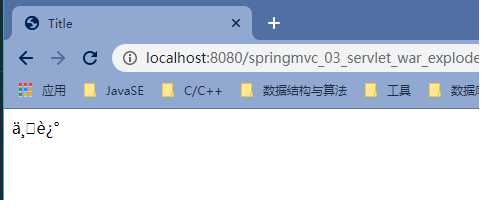
public class EncodingFilter implements Filter {
@Override
public void init(FilterConfig filterConfig) throws ServletException {
}
@Override
public void doFilter(ServletRequest servletRequest, ServletResponse servletResponse, FilterChain filterChain) throws IOException, ServletException {
servletRequest.setCharacterEncoding("utf-8");
servletResponse.setCharacterEncoding("utf-8");
filterChain.doFilter(servletRequest,servletResponse);
}
@Override
public void destroy() {
}
} <filter>
<filter-name>encoding</filter-name>
<filter-class>cn.imut.filter.EncodingFilter</filter-class>
</filter>
<filter-mapping>
<filter-name>encoding</filter-name>
<!-- 过滤所有的请求-->
<url-pattern>/*</url-pattern>
</filter-mapping>@Controller
public class EncodingController {
//过滤器解决乱码
@PostMapping("/e/t1")
public String test1(String name, Model model) {
model.addAttribute("msg",name);
return "test";
}
} <!-- springMVC自带过滤器-->
<filter>
<filter-name>encoding</filter-name>
<filter-class>org.springframework.web.filter.CharacterEncodingFilter</filter-class>
<init-param>
<param-name>eccoding</param-name>
<param-value>utf-8</param-value>
</init-param>
</filter>
<filter-mapping>
<filter-name>encoding</filter-name>
<url-pattern>/*</url-pattern>
</filter-mapping>后端部署后端,提供接口:提供接口
? JSON
前端独立部署,负责渲染后端的数据:
JSON(JavaScript Object Notation,JS 对象标记)是一种轻量级的数据交换格式
JSON采用完全独立于编程语言的文本格式来存储和表示数据
简洁和清晰的层次结构使得JSON成为理想的数据交换语言
易于人阅读和编写,同时也易于机器解析和生成。并有效的提升网络传输效率
在JavaScript语言中,一切都是对象。因此,任何JavaScript支持的类型都可以通过JSON来表示,例如字符串、数字、对象、数组等。
JSON键值对是用来保存JavaScript对象的一种方式,和JavaScript对象的写法也大同小异,键/值对组合中的键名写在前面并用双引号 "" 包裹,使用冒号:分隔,然后紧接着值:
{"name": "Qinjiang"}
{"age": "3"}
{"sex": "男"}JSON和JavaScript对象的关系
var obj = {a: 'hello', b: 'world'}; //对象
var json = '{"a" : "Hello", "b": "world"}'; //JSON字符串JSON和JavaScript对象互转
var obj = JSON.parse('{"a": "hello, "b": "world"}'); //结果为 " "var json = JSON.stringify({a: 'hello', b: 'world'}); //结果为 ' '<script type="text/javascript">
//编写一个JavaScript对象
var user = {
name : "张磊",
age : 3,
sex: "男"
};
//将js对象转换为JSON对象
var json = JSON.stringify(user);
console.log(json);
console.log("================");
//将JSON对象转换为JavaScript对象
var obj = JSON.parse(json);
console.log(obj)
</script> <!-- https://mvnrepository.com/artifact/com.fasterxml.jackson.core/jackson-databind -->
<dependency>
<groupId>com.fasterxml.jackson.core</groupId>
<artifactId>jackson-databind</artifactId>
<version>2.10.2</version>
</dependency> <!-- JSON乱码-->
<mvc:annotation-driven>
<mvc:message-converters>
<bean class="org.springframework.http.converter.StringHttpMessageConverter">
<property name="supportedMediaTypes">
<bean class="org.springframework.http.converter.json.Jackson2ObjectMapperFactoryBean">
<property name="failOnEmptyBeans" value="false"/>
</bean>
</property>
</bean>
</mvc:message-converters>
</mvc:annotation-driven>@Controller
public class UserController {
@RequestMapping("/j1")
@ResponseBody //不会走视图解析器,直接返回一个字符串
public String json1() throws JsonProcessingException {
//jackson, ObjectMapper
ObjectMapper mapper = new ObjectMapper();
//创建一个对象
User user = new User("张磊",22,"男");
String s = mapper.writeValueAsString(user);
return s;
}
}fastjson.jar是阿里开发的一款专门用于Java开发的包,可以方便的实现json对象与JavaBean对象的转换,实现JavaBean对象与json字符串的转换,实现json对象与json字符串的转换。实现json的转换方法很多,最后的实现结果都是一样的。
依赖
<dependency>
<groupId>com.alibaba</groupId>
<artifactId>fastjson</artifactId>
<version>1.2.60</version>
</dependency> System.out.println("*******Java对象 转 JSON字符串*******");
String str1 = JSON.toJSONString(list);
System.out.println("JSON.toJSONString(list)==>"+str1);
String str2 = JSON.toJSONString(user1);
System.out.println("JSON.toJSONString(user1)==>"+str2);
System.out.println("\n****** JSON字符串 转 Java对象*******");
User jp_user1=JSON.parseObject(str2,User.class);
System.out.println("JSON.parseObject(str2,User.class)==>"+jp_user1);
System.out.println("\n****** Java对象 转 JSON对象 ******");
JSONObject jsonObject1 = (JSONObject) JSON.toJSON(user2);
System.out.println("(JSONObject) JSON.toJSON(user2)==>"+jsonObject1.getString("name"));
System.out.println("\n****** JSON对象 转 Java对象 ******");
User to_java_user = JSON.toJavaObject(jsonObject1, User.class);
System.out.println("JSON.toJavaObject(jsonObject1, User.class)==>"+to_java_user);
use `ssmbuild`;
create table books (
`bookID` int(10) not null auto_increment comment '书id',
`bookName` varchar(100) not null comment '书名',
`bookCounts` int(11) not null comment '数量',
`detail` varchar(200) not null comment '描述',
key `bookID` (`bookID`)
)engine = InnoDB default charset = utf8;
insert into books values
(1,'Java',1,'从入门到放弃'),
(2,'MySQL',10,'从删库到跑路'),
(3,'Linux',5,'从进门到进牢');
select * from books;<dependencies>
<!-- 依赖:junit,数据库驱动,连接池,servlet,jsp,mybatis,mybatis-spring,spring-->
<dependency>
<groupId>junit</groupId>
<artifactId>junit</artifactId>
<version>4.13</version>
</dependency>
<dependency>
<groupId>mysql</groupId>
<artifactId>mysql-connector-java</artifactId>
<version>5.1.47</version>
</dependency>
<!-- https://mvnrepository.com/artifact/com.mchange/c3p0 -->
<dependency>
<groupId>com.mchange</groupId>
<artifactId>c3p0</artifactId>
<version>0.9.5.5</version>
</dependency>
<dependency>
<groupId>javax.servlet</groupId>
<artifactId>servlet-api</artifactId>
<version>2.5</version>
</dependency>
<!-- https://mvnrepository.com/artifact/javax.servlet/javax.servlet-api -->
<dependency>
<groupId>javax.servlet</groupId>
<artifactId>javax.servlet-api</artifactId>
<version>4.0.1</version>
</dependency>
<dependency>
<groupId>javax.servlet.jsp</groupId>
<artifactId>jsp-api</artifactId>
<version>2.0</version>
<scope>provided</scope>
</dependency>
<!-- https://mvnrepository.com/artifact/javax.servlet/jstl -->
<dependency>
<groupId>javax.servlet</groupId>
<artifactId>jstl</artifactId>
<version>1.2</version>
</dependency>
<!-- https://mvnrepository.com/artifact/org.mybatis/mybatis -->
<dependency>
<groupId>org.mybatis</groupId>
<artifactId>mybatis</artifactId>
<version>3.5.3</version>
</dependency>
<!-- https://mvnrepository.com/artifact/org.mybatis/mybatis-spring -->
<dependency>
<groupId>org.mybatis</groupId>
<artifactId>mybatis-spring</artifactId>
<version>2.0.3</version>
</dependency>
<!-- https://mvnrepository.com/artifact/org.springframework/spring-webmvc -->
<dependency>
<groupId>org.springframework</groupId>
<artifactId>spring-webmvc</artifactId>
<version>5.2.3.RELEASE</version>
</dependency>
<!-- https://mvnrepository.com/artifact/org.springframework/spring-jdbc -->
<dependency>
<groupId>org.springframework</groupId>
<artifactId>spring-jdbc</artifactId>
<version>5.2.3.RELEASE</version>
</dependency>
<dependency>
<groupId>org.projectlombok</groupId>
<artifactId>lombok</artifactId>
<version>1.18.8</version>
</dependency>
</dependencies>
<!-- 静态资源导出-->
<build>
<resources>
<resource>
<directory>src/main/java</directory>
<includes>
<include>**/*.properties</include>
<include>**/*.xml</include>
</includes>
<filtering>false</filtering>
</resource>
<resource>
<directory>src/main/resources</directory>
<includes>
<include>**/*.properties</include>
<include>**/*.xml</include>
</includes>
<filtering>false</filtering>
</resource>
</resources>
</build>jdbc.url = jdbc:mysql://localhost:3306/mybatis?useSSL=false&useUnicode=true&characterEncoding=UTF-8&serverTimezone=UTCmybatis-config.xml
<?xml version="1.0" encoding="UTF-8" ?>
<!DOCTYPE configuration
PUBLIC "-//mybatis.org//DTD Config 3.0//EN"
"http://mybatis.org/dtd/mybatis-3-config.dtd">
<!-- 核心配置文件-->
<configuration>
<!-- 配置数据源,交给Spring去做-->
<!-- 别名-->
<typeAliases>
<package name="cn.imut.pojo"/>
</typeAliases>
<mappers>
<mapper resource="cn/imut/dao/BookMapper.xml"/>
</mappers>
</configuration>spring-dao.xml
<?xml version="1.0" encoding="UTF-8"?>
<beans xmlns="http://www.springframework.org/schema/beans"
xmlns:mvc="http://www.springframework.org/schema/mvc"
xmlns:context="http://www.springframework.org/schema/context"
xmlns:xsi="http://www.w3.org/2001/XMLSchema-instance" xmlns:jdbc="http://www.springframework.org/schema/jdbc"
xsi:schemaLocation="http://www.springframework.org/schema/beans
http://www.springframework.org/schema/beans/spring-beans.xsd
http://www.springframework.org/schema/mvc
http://www.springframework.org/schema/mvc/spring-mvc.xsd
http://www.springframework.org/schema/context
http://www.springframework.org/schema/context/spring-context.xsd http://www.springframework.org/schema/jdbc http://www.springframework.org/schema/jdbc/spring-jdbc.xsd">
<!-- 1.关联数据库配置文件-->
<context:property-placeholder location="classpath:database.properties"/>
<bean id="dataSource" class="com.mchange.v2.c3p0.ComboPooledDataSource">
<property name="driverClass" value="${jdbc.driver}"/>
<property name="jdbcUrl" value="${jdbc.url}"/>
<property name="user" value="${jdbc.username}"/>
<property name="password" value="${jdbc.password}"/>
</bean>
<!-- 3.配置SqlSessionFactory对象 -->
<bean id="sqlSessionFactory" class="org.mybatis.spring.SqlSessionFactoryBean">
<!-- 注入数据库连接池 -->
<property name="dataSource" ref="dataSource"/>
<!-- 配置Mybatis全局配置文件:mybatis-config.xml -->
<property name="configLocation" value="classpath:mybatis-config.xml"/>
</bean>
<!-- 4.配置dao接口扫描包,动态的实现Dao接口可以注入到Spring容器中-->
<bean class="org.mybatis.spring.mapper.MapperScannerConfigurer">
<!-- 注入 sqlSessionFactory-->
<property name="sqlSessionFactoryBeanName" value="sqlSessionFactory"/>
<!-- 扫描dao包-->
<property name="basePackage" value="cn.imut.dao"/>
</bean>
</beans>spring-service.xml
<?xml version="1.0" encoding="UTF-8"?>
<beans xmlns="http://www.springframework.org/schema/beans"
xmlns:mvc="http://www.springframework.org/schema/mvc"
xmlns:context="http://www.springframework.org/schema/context"
xmlns:xsi="http://www.w3.org/2001/XMLSchema-instance"
xsi:schemaLocation="
http://www.springframework.org/schema/beans
http://www.springframework.org/schema/beans/spring-beans.xsd
http://www.springframework.org/schema/mvc
http://www.springframework.org/schema/mvc/spring-mvc.xsd
http://www.springframework.org/schema/context
http://www.springframework.org/schema/context/spring-context.xsd">
<!-- 扫描service下的包-->
<context:component-scan base-package="cn.imut.service"/>
<!-- 将业务类注入-->
<bean id="bookServiceImpl" class="cn.imut.service.Impl.BookServiceImpl">
<property name="bookMapper" ref="bookMapper"/>
</bean>
<!-- 声明式事务-->
<bean id="transactionManager" class="org.springframework.jdbc.datasource.DataSourceTransactionManager">
<!-- 注入数据源-->
<property name="dataSource" ref="dataSource"/>
</bean>
<!-- aop横切事务-->
</beans>spring-mvc.xml
<?xml version="1.0" encoding="UTF-8"?>
<beans xmlns="http://www.springframework.org/schema/beans"
xmlns:mvc="http://www.springframework.org/schema/mvc"
xmlns:context="http://www.springframework.org/schema/context"
xmlns:xsi="http://www.w3.org/2001/XMLSchema-instance"
xsi:schemaLocation="
http://www.springframework.org/schema/beans
http://www.springframework.org/schema/beans/spring-beans.xsd
http://www.springframework.org/schema/mvc
http://www.springframework.org/schema/mvc/spring-mvc.xsd
http://www.springframework.org/schema/context
http://www.springframework.org/schema/context/spring-context.xsd">
<!-- 注解驱动-->
<mvc:annotation-driven/>
<!-- 静态资源过滤-->
<mvc:default-servlet-handler/>
<!-- 扫描包-->
<context:component-scan base-package="cn.imut.controller"/>
<!-- 视图解析器-->
<bean id="internalResourceViewResolver" class="org.springframework.web.servlet.view.InternalResourceViewResolver">
<!-- 文件所在目录-->
<property name="prefix" value="/WEB-INF/JSP/"/>
<!-- 文件的后缀名-->
<property name="suffix" value=".jsp"/>
</bean>
</beans>applicationContext.xml
<?xml version="1.0" encoding="UTF-8"?>
<beans xmlns="http://www.springframework.org/schema/beans"
xmlns:mvc="http://www.springframework.org/schema/mvc"
xmlns:context="http://www.springframework.org/schema/context"
xmlns:xsi="http://www.w3.org/2001/XMLSchema-instance"
xsi:schemaLocation="
http://www.springframework.org/schema/beans
http://www.springframework.org/schema/beans/spring-beans.xsd
http://www.springframework.org/schema/mvc
http://www.springframework.org/schema/mvc/spring-mvc.xsd
http://www.springframework.org/schema/context
http://www.springframework.org/schema/context/spring-context.xsd">
<import resource="classpath:spring-dao.xml"/>
<import resource="classpath:spring-service.xml"/>
<import resource="classpath:spring-mvc.xml"/>
</beans>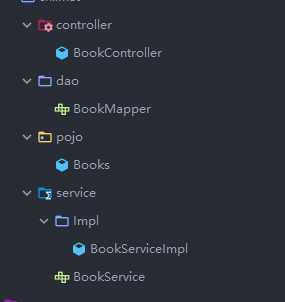
文件上传是项目开发中最常见的功能之一 ,springMVC 可以很好的支持文件上传,但是SpringMVC上下文中默认没有装配MultipartResolver,因此默认情况下其不能处理文件上传工作。如果想使用Spring的文件上传功能,则需要在上下文中配置MultipartResolver。
前端表单要求:为了能上传文件,必须将表单的method设置为POST,并将enctype设置为multipart/form-data。只有在这样的情况下,浏览器才会把用户选择的文件以二进制数据发送给服务器;
<!--文件上传-->
<dependency>
<groupId>commons-fileupload</groupId>
<artifactId>commons-fileupload</artifactId>
<version>1.3.3</version>
</dependency>
<!--servlet-api导入高版本的-->
<dependency>
<groupId>javax.servlet</groupId>
<artifactId>javax.servlet-api</artifactId>
<version>4.0.1</version>
</dependency> <!-- 文件上传-->
<bean id="multipartResolver" class="org.springframework.web.multipart.commons.CommonsMultipartResolver">
<property name="defaultEncoding" value="utf-8"/>
<property name="maxUploadSize" value="10485760"/>
<property name="maxInMemorySize" value="40968"/>
</bean>@RequestMapping("/upload")
public String fileUpload(@RequestParam("file") CommonsMultipartFile file , HttpServletRequest request) throws IOException {
//获取文件名 : file.getOriginalFilename();
String uploadFileName = file.getOriginalFilename();
//如果文件名为空,直接回到首页!
if ("".equals(uploadFileName)){
return "redirect:/index.jsp";
}
System.out.println("上传文件名 : "+uploadFileName);
//上传路径保存设置
String path = request.getServletContext().getRealPath("/upload");
//如果路径不存在,创建一个
File realPath = new File(path);
if (!realPath.exists()){
realPath.mkdir();
}
System.out.println("上传文件保存地址:"+realPath);
InputStream is = file.getInputStream(); //文件输入流
OutputStream os = new FileOutputStream(new File(realPath,uploadFileName)); //文件输出流
//读取写出
int len=0;
byte[] buffer = new byte[1024];
while ((len=is.read(buffer))!=-1){
os.write(buffer,0,len);
os.flush();
}
os.close();
is.close();
return "redirect:/index.jsp";
}/*
* 采用file.Transto 来保存上传的文件
*/
@RequestMapping("/upload2")
public String fileUpload2(@RequestParam("file") CommonsMultipartFile file, HttpServletRequest request) throws IOException {
//上传路径保存设置
String path = request.getServletContext().getRealPath("/upload");
File realPath = new File(path);
if (!realPath.exists()){
realPath.mkdir();
}
//上传文件地址
System.out.println("上传文件保存地址:"+realPath);
//通过CommonsMultipartFile的方法直接写文件(注意这个时候)
file.transferTo(new File(realPath +"/"+ file.getOriginalFilename()));
return "redirect:/index.jsp";
}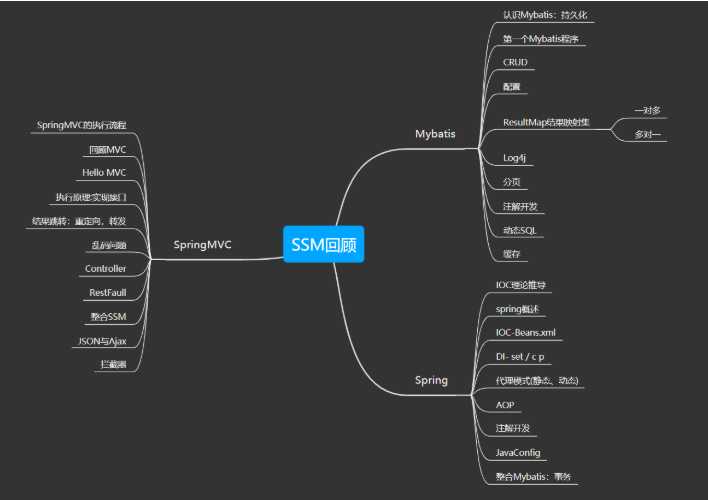
标签:软件设计 input rest 目录 相关 local str1 compiler handle
原文地址:https://www.cnblogs.com/yfyyy/p/12335085.html